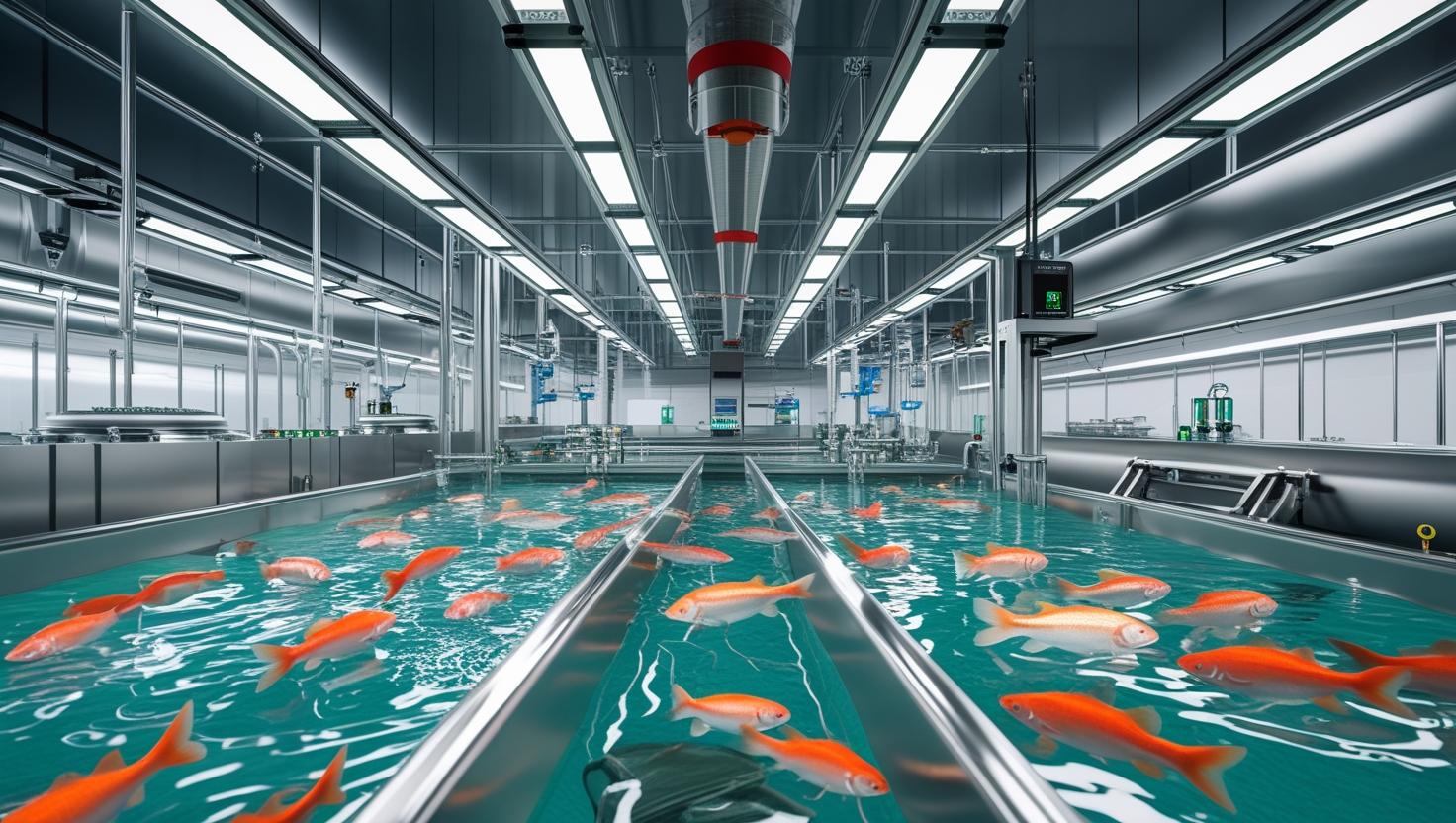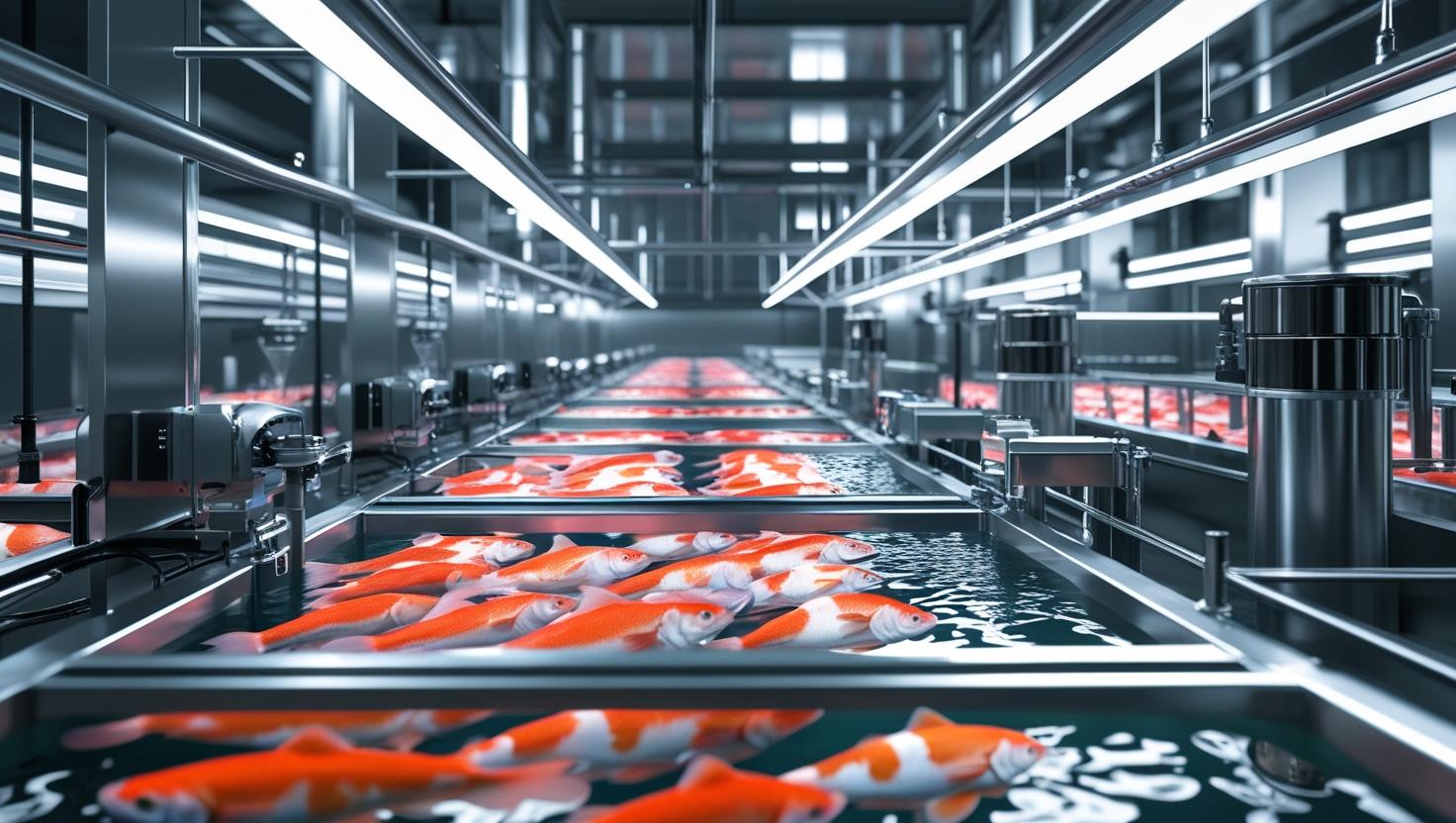The Future of Precision Aquaculture Industry is emerging as a powerful solution to meet the growing global demand for seafood while addressing the challenges of environmental sustainability and declining wild fish stocks. Precision aquaculture represents a technological shift in fish, shellfish, and algae farming, utilizing advanced tools such as artificial intelligence, Internet of Things (IoT), automated feeding systems, and real-time environmental monitoring. These innovations aim to optimize production, improve efficiency, reduce waste, and minimize ecological impacts.
Over the next decade, the industry is expected to play a critical role in ensuring food security, supporting marine biodiversity, and creating new economic opportunities in coastal and rural communities. By integrating data-driven decision-making with eco-friendly farming practices, the future of precision aquaculture promises to transform seafood production into a more sustainable, efficient, and profitable sector.

Global Market Outlook
The Future of Precision Aquaculture Industry is projected to expand significantly in the coming years. Increasing consumer demand for seafood, combined with concerns about overfishing and climate change, is driving the need for more sustainable and efficient aquaculture systems.
The global precision aquaculture market is projected to grow from USD 847.9 million in 2025 to USD 1,434.5 million by 2030, growing at a CAGR of 11.1%. This growth will be fueled by technological advancements, government support, and private investment in sustainable food production systems.
Emerging economies in Asia-Pacific are likely to dominate production volumes, while developed nations such as Norway, the United States, and Canada will lead in high-tech applications. The interplay between traditional aquaculture hubs and technologically advanced markets will define the future competitive landscape of the industry.
Technological Drivers
Several key technologies are shaping the Future of Precision Aquaculture Industry. IoT and sensor networks allow for real-time monitoring of water conditions, including temperature, dissolved oxygen levels, and pH. Artificial intelligence analyzes this data to optimize feeding schedules, detect potential health issues, and improve harvest timing. Robotics and underwater drones are increasingly being used for farm inspections, net cleaning, and monitoring fish health without causing stress to the animals.
Genetic improvement programs are enabling the development of disease-resistant fish breeds, reducing mortality rates and improving growth efficiency. Blockchain technology is enhancing transparency in the seafood supply chain by allowing consumers to trace the origin of their seafood, ensuring authenticity and sustainability. Together, these technologies are enabling a level of precision and efficiency previously unattainable in aquaculture.
Sustainability and Environmental Impact
One of the most important aspects of the Future of Precision Aquaculture Industry is its contribution to environmental sustainability. By using precise monitoring and control systems, farms can reduce feed waste, limit the discharge of waste into surrounding waters, and maintain optimal conditions for fish health. This not only improves productivity but also ensures that marine ecosystems remain healthy and resilient.
Precision aquaculture also aligns with global efforts to achieve the United Nations Sustainable Development Goals (SDGs), particularly those related to zero hunger, responsible consumption, and climate action. Sustainable aquaculture practices help reduce reliance on wild-caught fish, support marine biodiversity, and provide livelihoods for millions of people in coastal communities.
Regional Trends
Different regions are contributing to the growth of the Future of Precision Aquaculture Industry in unique ways. Asia-Pacific remains the largest producer of farmed seafood, with China, India, and Vietnam investing heavily in expanding their aquaculture capabilities. In Europe, countries such as Norway and Scotland are pioneering sustainable and traceable farming methods, often supported by advanced technology integration. North America is focusing on offshore aquaculture systems and recirculating aquaculture systems (RAS) that reduce environmental impacts and allow production closer to major urban markets.
Latin America is emerging as a competitive player, particularly in shrimp and salmon farming. Technological adoption in these regions is helping improve efficiency and expand market access, making them important contributors to the global industry.
Key Challenges
Despite its promising future, the Future of Precision Aquaculture Industry faces several challenges that could slow adoption. High initial investment costs remain a significant barrier, especially for small-scale farmers. Many aquaculture operators also lack the technical expertise required to manage complex systems, creating a need for specialized training programs.
Cybersecurity is becoming a growing concern as more aquaculture operations rely on connected devices and cloud-based platforms. Additionally, regulatory frameworks vary widely between countries, creating complexity for businesses operating in multiple regions. Addressing these challenges will be essential to ensuring sustainable growth.
Download PDF Brochure @ https://www.marketsandmarkets.com/pdfdownloadNew.asp?id=242307580
Opportunities for Growth
The Future of Precision Aquaculture Industry offers numerous opportunities for innovation and investment. The development of eco-friendly fish feeds that reduce reliance on wild fishmeal can significantly improve sustainability. Offshore aquaculture, supported by renewable energy sources, can help expand production without overburdening coastal areas.
There is also potential for AI-powered farm management platforms that integrate environmental monitoring, feeding automation, and market forecasting into a single system. These innovations could transform aquaculture into a highly efficient and profitable sector, capable of meeting growing global seafood demand.
Role of Artificial Intelligence
Artificial intelligence plays a central role in the Future of Precision Aquaculture Industry. AI systems analyze vast amounts of data to predict feeding needs, detect signs of disease before they become serious, and optimize harvesting schedules. This predictive capability not only reduces costs but also minimizes environmental impacts by ensuring resources are used efficiently.
For example, AI-powered vision systems can monitor fish behavior and health in real time, allowing immediate intervention when anomalies are detected. This proactive approach is key to maintaining productivity and profitability.

Blockchain and Traceability
Blockchain technology is transforming how seafood products are tracked and verified. In the Future of Precision Aquaculture Industry, blockchain ensures that every step of the production process is recorded and immutable, from hatchery to retail. This level of traceability increases consumer confidence, reduces the risk of seafood fraud, and enables producers to command premium prices for certified sustainable products.
As consumers become more conscious about the origins of their food, blockchain is likely to become a standard feature in precision aquaculture operations worldwide.
Consumer Awareness and Demand
Consumer demand is another driving force behind the Future of Precision Aquaculture Industry. There is a growing preference for sustainably produced seafood, with many consumers willing to pay more for eco-certified products. As awareness of environmental issues continues to rise, producers who can demonstrate responsible farming practices will have a competitive advantage.
Urban markets, in particular, are seeing increased demand for premium, high-quality seafood products. This trend is expected to accelerate as disposable incomes rise and dietary preferences shift toward healthier protein sources.
Future Outlook
The Future of Precision Aquaculture Industry is likely to feature fully automated farms powered by renewable energy and managed through integrated AI and blockchain systems. These farms will operate offshore, away from sensitive coastal ecosystems, and will produce large volumes of seafood with minimal environmental impact.
The combination of technological innovation, sustainability, and market demand positions precision aquaculture as one of the most important sectors in the global food industry for the decades ahead.
Explore In-Depth Semiconductor & Electronics Market Research
https://www.marketsandmarkets.com/semiconductorand-electonics-market-research-87.html
FAQs
Q1: What is precision aquaculture?
Precision aquaculture uses technologies like AI, IoT, and automation to optimize seafood farming, improve efficiency, and reduce environmental impacts.
Q2: How will AI shape the Future of Precision Aquaculture Industry?
AI will enhance feeding efficiency, predict health issues, and improve decision-making, leading to higher yields and lower costs.
Q3: Which countries are leading in precision aquaculture?
Norway, China, the United States, and Canada are among the leaders in adopting and developing advanced aquaculture systems.
Q4: Is precision aquaculture sustainable?
Yes, it minimizes waste, conserves resources, and supports healthy marine ecosystems, making it a sustainable alternative to traditional fishing.
Q5: What challenges does the industry face?
High initial investment, technical skill requirements, cybersecurity risks, and varied regulations are some of the main challenges.
See The Latest Semiconductor Reports:
Intelligent Transportation System Market Size, Share & Trends: https://www.marketsandmarkets.com/Market-Reports/intelligent-transport-systems-its-market-764.html
Artificial Intelligence in Manufacturing Market Size, Share & Trends: https://www.marketsandmarkets.com/Market-Reports/artificial-intelligence-manufacturing-market-72679105.html
Al-based Image Analysis Market Size, Share & Trends : https://www.marketsandmarkets.com/Market-Reports/ai-based-image-analysis-market-225042980.html
Automated Stationary NDT & Inspection Systems Market Size, Share & Trends: https://www.marketsandmarkets.com/Market-Reports/automated-stationary-ndt-inspection-systems-market-233564506.html
